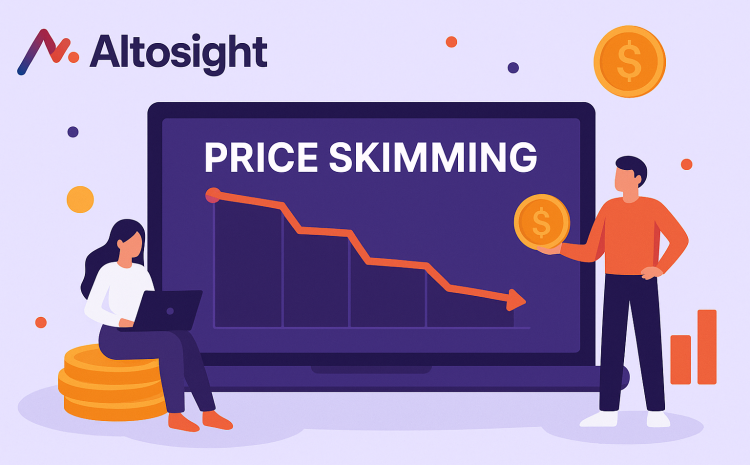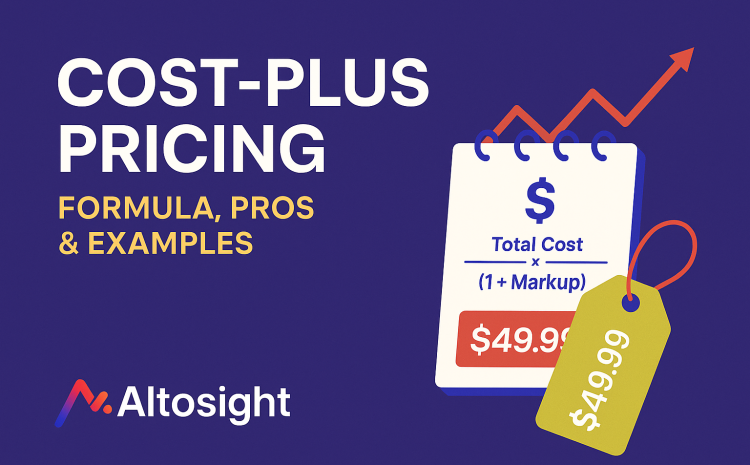
Have you ever wondered why airline tickets skyrocket during the holidays or why you can get flowy dresses and light shirts for more than half off in the winter?
Well, retailers dictate these prices by a strategy known as demand-based pricing.
We will explore this concept further by learning what it is, reviewing some demand-based pricing examples, and studying its pros and cons.
What Is Demand-Based Pricing?
The demand-based pricing method considers fluxes in customer demand and revises prices to fit the changes.
In a demand-based pricing strategy, the prices adjust to get maximum revenue by tapping into the ebb and flow of what customers are willing to pay for something at any given time.
Companies can use many forms and methods to implement demand-based pricing.
These forms all tie into consumer demand but include factors such as company goals, product quality and demand, competition stock levels and the business place in the market.
What is Demand-Oriented Pricing?
Demand-oriented pricing includes seeking to maximize profits based on supply and demand. This is when the seller sets their prices at the level they hope buyers will pay for their product or service.
Demand-oriented pricing and demand-based pricing are interchangeable.
Demand-Based Pricing Methods
There are five key demand-based pricing methods companies use. Depending on where your business stands, you can choose to apply one or all of these methods.
Price Skimming
Price skimming is the practice of initially charging the highest price for a product that consumers are willing to pay and reducing the price as time goes on.
It is common for new and innovative products or products from already established and trusted companies.
Usually, the company will set the price very high and reduce it slowly as competition emerges and demand decreases. As more companies start producing the same thing or the novelty wears off, the original company has to adjust prices to remain relevant in the market.
Yield Management
Yield management is a strategy where a business tries to price a product to match demand levels over time. It is a common strategy for businesses with a set or fixed inventories, like airlines and hotels.
Because they only have a limited amount of seats or rooms available, they can adjust prices based on what they have researched as peak or low seasons.
Yield management is based on the assumption that urgency is driven by the waning availability of a product with limited supply.
Penetration Pricing
Penetration pricing is the process of undercutting the price of a product or service when introducing it to a market to entice new buyers.
Penetration pricing draws customers away from a known or established product to a newer one.
Lower prices often increase brand awareness, especially in harder times. For new companies, penetration pricing is an excellent way to break into the market.
Once you have captured consumer attention, your brand can retain its customers even if you increase prices.
Geo-based Pricing
Geo-based pricing is a strategy where a business adapts the prices of products based on geographical location. It includes the knowledge that consumers are willing to pay different prices in different places or in different currencies.
For example, people in second-world countries generally have lower spending power than people in first-world countries and probably a different currency too.
So the price and sometimes the product too might be different so it can be affordable in these locations.
Value-Based Pricing
This is the process of pricing a product based on its perceived value. Companies use this strategy for products or services that increase customers’ self-image.
Usually, customers are only willing to pay the price they collectively think an item is worth.
Value-based pricing is common for luxury goods and services. Think of impractical designer items, premium subscriptions, and some art prices.
Demand-Based Pricing Advantages and Disadvantages
Like with any other strategy, there are advantages and disadvantages of demand-based pricing.
Pros
The two biggest advantages of demand-based pricing are:
Optimized Revenue Generation
Demand-based pricing gets the most revenue out of consumer demand. It capitalizes on the demand for a product or service by encouraging smart pricing.
Improved Customer Satisfaction
Certain demand-based pricing methods ensure better services and products for consumers. For fixed-inventory items, demand-based pricing ensures the system is manageable. This ensures that each customer is served well and experiences all the advantages of the service or product.
Cons
Demand-based pricing comes with two key disadvantages:
It is Fickle
Demand is hard to predict, even for established companies with a set customer base. You can do extensive market research but cannot predict human action, and demand can wane quickly. Demand-based pricing has an element of trial and error, even with data.
It is Labor-Intensive
Demand-based pricing can only work with research, observation, and constant adjustment. Teams have to dedicate staffing and time to research and gather data, which is labor and resource-intensive, especially because you have to adjust pricing so often.
It would be cheaper for a company to stick to a standard pricing model.
Examples Of Demand-Based Pricing
A common example of demand-based pricing is in the airline industry. They use different methods to price tickets.
For example, plane tickets to New York on New Year’s Eve are costly. Even when bought in advance, these tickets will cost more than a New Year’s Eve ticket to Kansas.
Similarly, the demand for flights during the holidays like Thanksgiving and Christmas is very high. Airlines know that customers will pay more for these flights and thus capitalize on profit by charging up to double the price.
Another demand-oriented pricing example is Apple. When launching new iPhones, Apple employs price skimming. The new model launches at an extremely high cost.
Apple knows that people are excited and invested in the release of new iPhone generations, at least in the USA. Because of this, they can price a new phone at high prices and lower it after the initial demand wanes off.
Conclusion
Demand-based pricing is a smart pricing strategy that companies can implement. While it takes some resources and time, demand-based pricing increases revenue.
You can implement any demand-based pricing model to better position your products in the market. With data, trial and error, you find the best demand-based pricing strategy.





